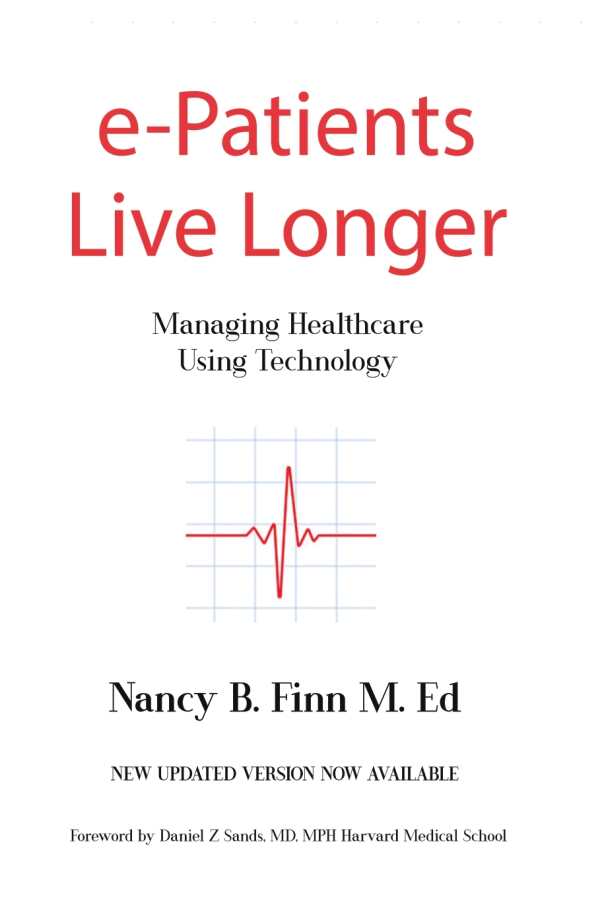e-Patients Live Longer
Managing Healthcare Using Technology
e-Patients Live Longer is an valuable resource for patients looking to navigate the particular challenges of health care in the twenty-first century.
Nancy B. Finn’s patient guide e-Patients Live Longer argues that digital communications can improve health care.
Asserting that a well-informed patient is an empowered one, this book aims to provide information and resources for the better management of one’s health through digital communication with health-care providers. In total, it covers eleven specific technologies impacting individual and general health care. Its topics include the importance of keeping digitized health records in secure portals, using the devastation wrought by Hurricane Katrina as an example; clear explanations of the Health Insurance Portability and Accountability Act; questions to ask oneself before choosing a health-care provider; and methods for distinguishing between reliable and unreliable web sources, with an entire chapter dedicated to a list of trustworthy websites.
The book is filled with practical and actionable advice. Because of the balanced way in which it addresses both the positives and the negatives of technological advances in the health-care industry, it is convincing both in discussing the importance of open digital communication between patients and their health-care providers and in addressing related, technology-fed dangers to patient privacy. And its formatting is usefully consistent, with self-explanatory subheadings followed by patient anecdotes that are complemented by data in tables and charts. Bullet-point summaries make it accessible as a reference text too.
In its forward-looking conclusion, the book speculates about what health care will look like in a few decades, extolling the benefits of artificial intelligence and greater technological advances in the medical field. The result is an optimistic guide, though one that falters in its last pages by ignoring the possible dangers of the changes it anticipates, eschewing the caution reflected in most of the text. This extends to the hypothetical example of microchips that the book posits could be embedded in people’s arms upon their births in the near future—used to to help track their medical and biological records along with their birth certificates. While such possibilities may raise alarm in general audiences, these are assuaged with the presumption that the technology would be controlled by patients themselves and with the assurance that the hypothetical websites would be secure—beliefs that are at odds with a previous chapter, dedicated to addressing security risks and the the dangers inherent to such systems.
e-Patients Live Longer is an valuable resource for patients looking to navigate the particular challenges of health care in the twenty-first century.
Reviewed by
Carolina Ciucci
Disclosure: This article is not an endorsement, but a review. The publisher of this book provided free copies of the book and paid a small fee to have their book reviewed by a professional reviewer. Foreword Reviews and Clarion Reviews make no guarantee that the publisher will receive a positive review. Foreword Magazine, Inc. is disclosing this in accordance with the Federal Trade Commission’s 16 CFR, Part 255.

